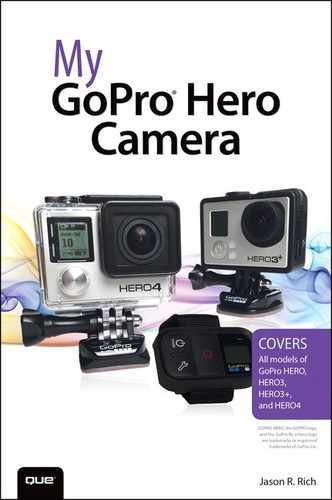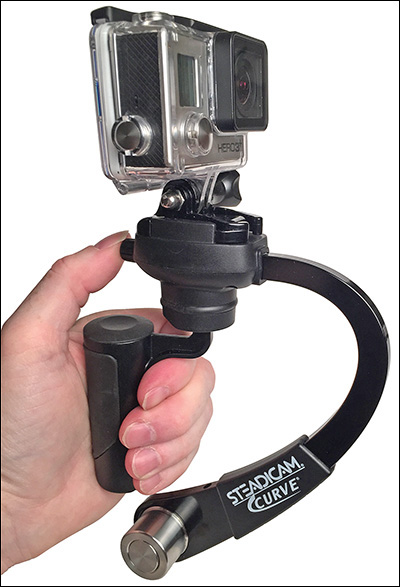13. 10 Strategies for Shooting Awesome HD Video

In this chapter, you learn how to combine your knowledge of operating the GoPro camera with your own creativity, plus use strategies to shoot better videos in a wide range of situations. Topics include the following:
![]() Choosing the best Resolution, FPS, and FOV for a particular shooting situation based on how you’ll ultimately be showcasing your video
Choosing the best Resolution, FPS, and FOV for a particular shooting situation based on how you’ll ultimately be showcasing your video
![]() Using the light within your shooting area to its utmost advantage, and compensating in low-light situations
Using the light within your shooting area to its utmost advantage, and compensating in low-light situations
![]() Deciding on the best mount to use to help you shoot video from the perfect angle based on the shooting situation and your needs
Deciding on the best mount to use to help you shoot video from the perfect angle based on the shooting situation and your needs
![]() Making sure you have the right equipment on-hand to achieve your filming objectives
Making sure you have the right equipment on-hand to achieve your filming objectives
A lot of similarities exist between using your GoPro camera for shooting high-resolution digital images and using it to shoot HD video. Many of the strategies you read about in Chapter 9, “10 Strategies for Taking Professional-Quality Digital Photos,” also apply when shooting video.
However, when shooting video, instead of pressing the shutter button and holding the camera steady for a fraction of a second to capture a single image, it’s essential that the camera is steady for longer periods and that, when moving the camera as you film, you use only slow and steady movements.
In many video shooting situations, in addition to focusing on how to capture the best visuals, you also need to ensure you are able to record the best-quality audio. So, you need to think about a lot of issues to prepare for shooting HD video, which might present more opportunity for things to go wrong.
By following the 10 video shooting strategies offered in this chapter, combining them with the rest of the knowledge you acquire from this book, and tapping your own creativity, you can ultimately shoot high-quality HD video that you’ll be proud to share with your audience (after it’s edited, of course).
Preplanning Is Essential
Before you start shooting, think about what you want to accomplish, and create a plan. If you can envision your edited video in your mind prior to shooting, you can take a more organized approach during the shooting process and be less prone to forget to shoot essential content. Write down your ideas, storyboard, or shot list.
Even though you want to preplan your shots as much as possible, always be open to spontaneous, creative inspiration that often strikes while you actually film.
As you plan your video, consider
• What will be the topic of your video? If you want to tell a story, outline the story. Create a storyboard or shot plan that lists the key scenes or shots that you don’t want to miss shooting.
• How you want to showcase your main subjects.
• What shooting conditions you’ll encounter, and what challenges you should be prepared for.
• The types of shots you want to capture, and from what shooting perspectives.
• Whether you want to capture the same shots repeatedly from different perspectives using the same camera, or if you can set up and control multiple cameras at once to capture the same action. Having multiple choices for each scene or shot makes editing your video easier, plus it makes the final video project more enjoyable to watch.
• How you’ll record quality audio with the video, if necessary.
• The anticipated length of your final edited video.
You Don’t Need to Shoot in Order
Using any video editing software or a mobile app, you can reorder the sequence of your content. Thus, if you’re filming a video that’s designed to tell a story, you don’t have to shoot that story in order.
You need to create a storyboard or shot list, so you know exactly what you need to shoot and don’t forget anything important.
Having the Right Equipment at Your Disposal
After you plan your video in advance, gather together all the camera equipment you need to actually record each shot or scene you envision. You already know the importance of bringing along extra fully charged batteries and microSD memory cards. This can’t be overstated enough because running out of power or not having enough storage space are the two most common problems amateur GoPro videographers encounter.
1. Having considered in advance the shooting conditions you’ll encounter, make sure you bring along the appropriate camera housings.

2. Choose the best housing backdoor option for each shooting situation. Don’t forget to consider the protection of the camera, as well as the audio quality you need to record.
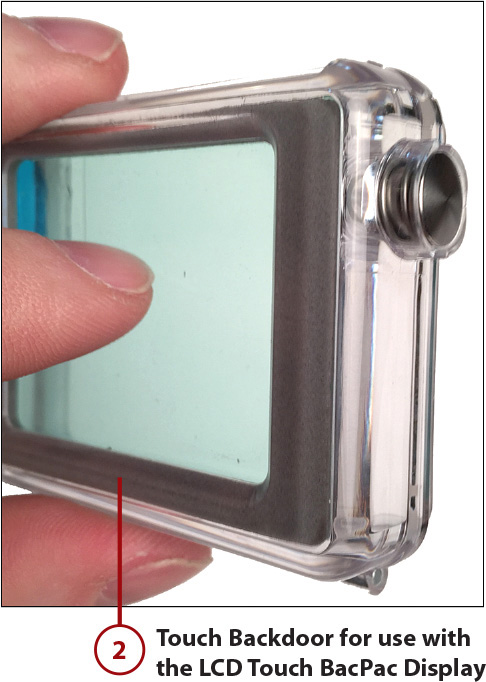
3. Select the best mounts so that you can position the camera at exactly the right height and angle to capture each shot that you want or need, and hold the camera firmly in place.
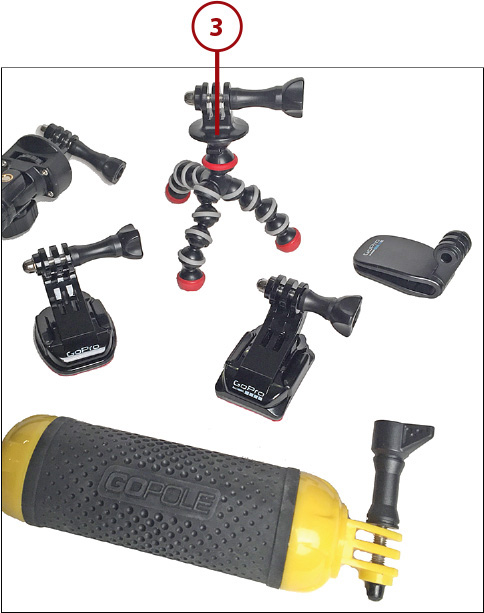
4. When deciding which mounts to use, think about how you’ll actually control the camera—by pressing buttons on the camera, using the Smart Remote, or via the GoPro App and your mobile device. Make sure you bring along the Smart Remote with its various accessories or your smartphone (or tablet).

5. Don’t forget the ancillary GoPro accessories that you also need, such as the LCD Touch BacPac, Anti-Fog Inserts, camera tether, lens filters, 3.5mm Mic Adapter, external microphone, Anti-Vibration Locking Plugs, extra adhesive strips for specific mounts, and/or microfiber lens cleaning cloth.
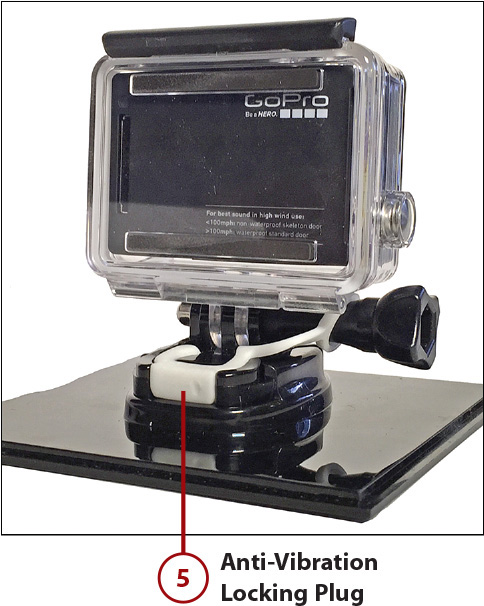
Choosing the Best Shooting Resolution
Each GoPro camera model can shoot HD video at a variety of different resolutions. To recap, the resolution you select determines how many pixels are used to record each frame of your video. This impacts things such as the image clarity, vividness of color, and level of detail in your shots.
The resolution you should choose depends on
• The shooting situation
• How the content will be presented and shared later
• What you shoot (your subject matter) and the shooting perspective you use
• How you mount the camera
• How much content you want to appear within the frame
• The impact the fisheye effect will have on your shots, and whether this is acceptable
For the vast majority of your shooting needs as an amateur videographer, who will ultimately watch your videos at home on your 1080p HD television set or computer monitor, plan to use the 1080p, 24FPS, Ultra Wide, or Medium FOV settings, or the 1080p Superview 24 FPS, Ultra Wide Resolution settings.
The higher the resolution you choose, the larger your video files will be, and the more memory card storage space you need. You must ensure that your computer ultimately can edit video shot at the camera’s higher resolutions because this requires more processing power, RAM, hard drive space, and a higher-end graphics card. (Refer to the Minimum System Requirements for the video editing software you’ll be using, and ideally, make sure your computer exceeds those requirements.)
The following list offers suggestions for choosing the optimal resolution on a GoPro Hero4 Black, based on what you want to achieve in a specific shooting situation:
• WVGA: The camera’s lowest shooting resolution results in Standard resolution (non-HD) footage. The file size associated with this resolution is much smaller. At this Resolution, you can opt to shoot at up to 240 FPS, which is ideal for capturing ultra-slow motion footage.
• 720p: This enables you to capture HD video but at a lower resolution. It’s ideal when holding the camera in your hands and shooting content that will be shown using an ultra-slow motion effect.
• 720p Superview: This offers the same benefits at 720p, but enables you to utilize the GoPro camera’s ultra wide angle lens to capture more immersive first-person footage. Consider this resolution when you mount the camera onto yourself to shoot a high-action scene that you’ll later showcase in slow motion, and watch on your TV in Wide viewing mode.
• 960p: This is excellent for capturing first-person perspective shots when the camera is mounted on yourself and you plan to shoot a high-action sequence that you want to showcase in slow motion. Compared to 720p, however, 960p includes more detail within your shots because more pixels are recorded within each frame.
• 1080p: The most commonly used shooting resolution (at 24 or 30 FPS) because it’s compatible with all 1080p HD flat screen TVs, most computer monitors, as well as online-based video sharing services (such as YouTube). Because you record a lot of detail within each frame, the camera becomes more susceptible to vibration and quick jerky movement, making it a good idea to use a tripod or mount.
• 1080p Superview: This resolution option is ideal for shooting first-person perspective video that truly utilizes the GoPro camera’s ultra wide angle lens. You’ll get content that’s more immersive and good quality. During playback, it’s equivalent to using the Wide option, instead of the Standard option, when viewing a Hollywood blockbuster on your HDTV.
• 1440p: Use this resolution to capture smooth, high-action footage. You can achieve the best results when your camera is mounted and held steady.
• 2.7K: This resolution can generate cinema-quality results and is overkill for most consumer-oriented video projects. You get high-quality video but at a resolution most TVs and computer monitors can’t display.
• 2.7K 4:3: The added benefit to this resolution (compared to 2.7K) is that it offers a larger viewing area and captures more content within each frame. During playback, it’s equivalent to using the Wide option, instead of Standard option, when viewing a Hollywood blockbuster on your HDTV.
• 2.7K Superview: Again, this video option is more suited to professional videographers who want to capture cinematic quality content. 2.7K Superview captures a wider Field of View than the 2.7K option.
• 4K: This is another of the GoPro camera’s “professional” shooting modes. Use it when your camera will be filming from a fixed position and mounted on a tripod. You’ll get incredibly high-resolution content, even in low-light situations. However, you must have a compatible TV or monitor to later view this content.
• 4K Superview: Use this resolution option to capture the most detailed and immersive footage possible from a first-person perspective. During playback, it’s equivalent to using the Wide option, instead of the Standard option, when viewing a Hollywood blockbuster on your HDTV.
When selecting a shooting resolution, you need to select a Frames Per Second rate, and in some cases, a Field of View setting.
Learn How to Adjust Your Camera’s Settings
Refer to Chapter 10, “Shooting HD Video,” for step-by-step directions that explain how to adjust your camera’s shooting Resolution, Field of View, and Frames Per Second rate when the camera is in Video, Video+Photo, Time Lapse Video (if applicable), or Looping Video mode.
Selecting the Best Frames Per Second (FPS) Rate
The Frames Per Second (FPS) option enables you to determine how many individual frames of video your camera can record each second. Most TV shows and movies are shot at 24 frames per second when standard playback is used. However, if you plan on incorporating special effects into your video, or playing the content back at faster or slower speeds, you need to use a higher FPS rate.
For example, if you want to shoot a high-action scene but play it back in your edited video in slow motion, to achieve the best results and see the most detail during that slow motion sequence, shoot it at the highest FPS rate possible. Slower frame rates, however, are better suited for time lapse videography.
If you know the video you’ll be shooting will be used for normal speed playback, use between 24 and 30 frames per second. When you increase the FPS rate, this increases the amount of storage space needed for your video files.
Deciding Which Field of View (FOV) Option to Use
By default, your GoPro camera is designed to shoot video using an Ultra Wide Field of View. This is ideal for shooting extremely immersive video from a first-person perspective. However, there will be shooting situations in which capturing so much content within your frame won’t be advantageous.
To see the difference between the Narrow, Medium, and Wide Field of View option when shooting at 1080p, take a look at these examples from a video that was shot using the GoPro Hero4 Black.
The fourth example shows the same shot captured using the 1080p Superview setting. For each of these examples, the position of the camera remained fixed, and no other settings were altered. Notice how much scenery is included on the left and right edges of the frame when looking at each FOV setting.
In some cases, the FOV you choose is a creative decision. However, you can also decrease the FOV if you want to diminish or eliminate the fisheye effect captured by your camera.
Restricted Views
Shooting with the GoPro Hero4 currently gives you the most options for Resolution, FPS, and FOV settings. However, when using the Hero3+ or Hero4 Black, only when shooting at 720p or 1080p can you choose between Narrow, Medium, or Ultra Wide Field of View.
The 2.7K Resolution option enables you to choose only between a Medium or Ultra Wide Field of View, whereas all the other available Resolution options require you to shoot HD video using an Ultra Wide Field of View exclusively.
Deciding the Best Way to Shoot Your Subject
Many amateur videographers tend to position their intended subject in the center of the frame and then shoot that subject from a head-on perspective. However, if you watch any television show or movie shot by a professional cinematographer you’ll notice that this approach is seldom, if ever, used.
Instead, find an interesting shooting angle or perspective from which you capture your subject within each shot. This might mean shooting from above the subject (in a slight downward direction), from below your subject (in a slight upward direction), from the side of your subject, or from a slight diagonal.
There Are No Rules!
You do not always need to shoot from a head-on perspective, and your subject does not need to be positioned in the center of the frame.
When choosing how to mount the camera, you can decide the height the camera will shoot from, and in most cases, also adjust the shooting angle after the camera is mounted. Even a slight change in camera height or angle can dramatically alter how you capture a scene.

If you opt to hold the camera, you, of course, have unlimited options for how you position the camera and then move it around while shooting. However, for the best results when shooting HD video, do not hold the camera directly in your hands.
Why Use a Handle or Grip?
Using an optional handle or grip, instead of holding the GoPro camera directly in your hands, helps to ensure you keep your hands and fingers out of the frame when shooting, plus you can hold the camera steadier. This results in smoother footage.
Depending on what you want to accomplish, and which mount you use, it might make sense to position the GoPro camera upside down when shooting. If you opt to do this, from the camera’s Settings menu, turn on the Orientation Up/Down feature, so the camera automatically rotates your footage as it’s recorded. This saves you a step in the editing process. The Hero4 camera, with the February 2015 Camera Software update installed, now automatically adjusts orientation.
Using Lighting to Your Advantage
To recap an important concept from Chapter 8, “Shooting High-Resolution Photos,” to frame your shots, always pay attention to the position of your primary light source. This is just as important when shooting video.
In general, as the videographer, you want to position your primary light source behind you, and try to ensure that it’s shining evenly onto your subject. If light shines directly into the camera’s lens, you could get unwanted glares, or the footage could easily become overexposed because the camera’s lens takes in too much direct light. The exception to this is when you shoot a sunrise or sunset, or want to create a glare or silhouette effect within your shot for creative purposes.
When the primary light source isn’t shining evenly onto your subject, this also often generates unwanted shadows. As the videographer, pay attention to shadows, and make sure they’re not ruining your shots. Shadows can distract your audience and take away from the professional look for your production.
As you learned in the previous chapter, your GoPro camera can handle low-light situations well because of the Auto Low Light and Spot Meter options that you can turn on after selecting the Video, Video+Photo, or Looping Video shooting mode.
Handling Camera Movement
Anytime you shoot video and the camera is in motion—whether you hold it in your hands using a handle or grip, or have the camera mounted to yourself or your equipment—you always want to ensure that you hold the camera as steady as possible. Avoid excessive shaking or quick jerky movements.
When panning with the camera or somehow holding it, always use slow and steady movements. When the camera is mounted in equipment, make sure it is held securely in place, so it can’t move around or shake excessively while it’s in motion.
Instead of holding the camera in your hands and moving, for more professional results and to capture smoother movement, consider using the optional Tiffen Steadicam Curve.
The Tiffen Steadicam Curve is perfectly weighted for specific GoPro camera models and automatically helps to compensate for sudden or jerky movements when the camera is in motion. This GoPro accessory is a scaled-down version of Steadicams used by professional cinematographers equipped with high-end cameras.
Because this accessory requires the videographer to be holding the Steadicam and the camera, it’s best suited for when the videographer is shooting other subjects and not actually engaged in the activity. When the videographer is engaged in an activity, he should use a hands-free mount that allows the camera to be attached to his body or equipment.
More About the Steadicam Curve
Additional information about the Tiffen Steadicam Curve is included in Chapter 4, “Overview of GoPro Camera Mounts.” You can also discover useful information about this accessory from the company’s website (http://tiffen.com/steadicam/steadicam-curve).
To watch sample videos created using the Steadicam Curve and see firsthand the difference this accessory can make when trying to shoot smoother videos while holding the camera, visit www.tiffen.com/curve_videostest.html.
Tagging Your Best Shots as You Shoot
The GoPro Hero4 has a built-in Tag feature you can use while shooting video. As you actually film, if there’s a shot or scene that you think is fantastic and you want to find it quickly during the editing process, simply press the Tag button on the side of the camera.

When editing your video using the GoPro Studio software, you can see the tags within your raw footage and find them easily; although, they won’t appear in your final edited video.
Shooting Plenty of Raw Footage
As the videographer, you always want to shoot more raw video footage than you actually plan to use or could possibly need. During the video editing process, you trim down scenes or shots, plus cut out content. Whenever possible, you also want to have multiple options (or takes) for each key shot or scene to choose from.
When time and conditions permit, try to shoot the same shots or scenes from different angles or perspectives, so you have multiple takes. During the filming process, you should shoot two, three, or even five times the amount of content you’ll actually use. This way, you can later choose only the best shots to showcase in your edited video project, and you always have options while editing.
Always Be Prepared!
Knowing you’ll be shooting a lot of extra content, be prepared. Have extra microSD memory cards and fully charged camera batteries on hand.
